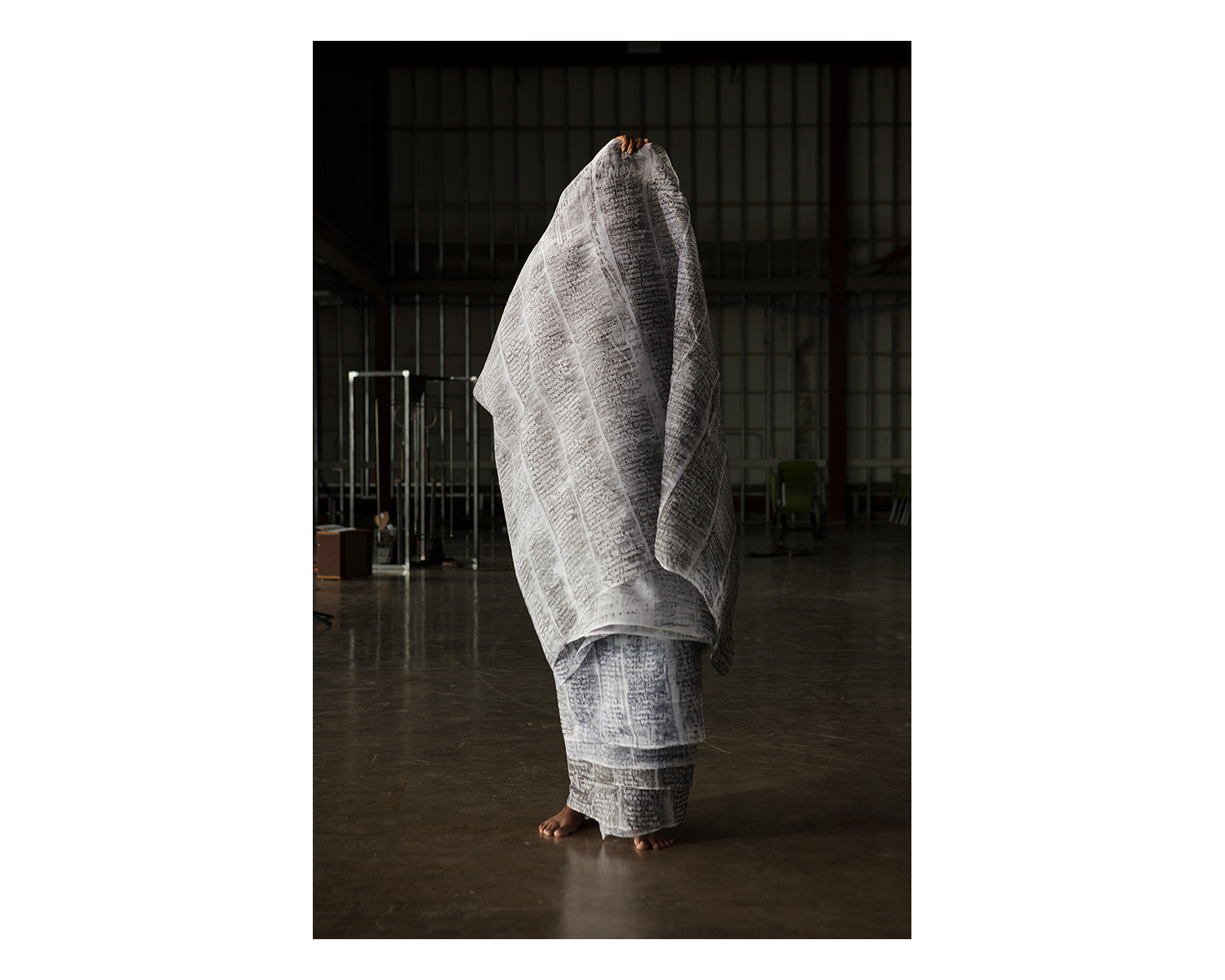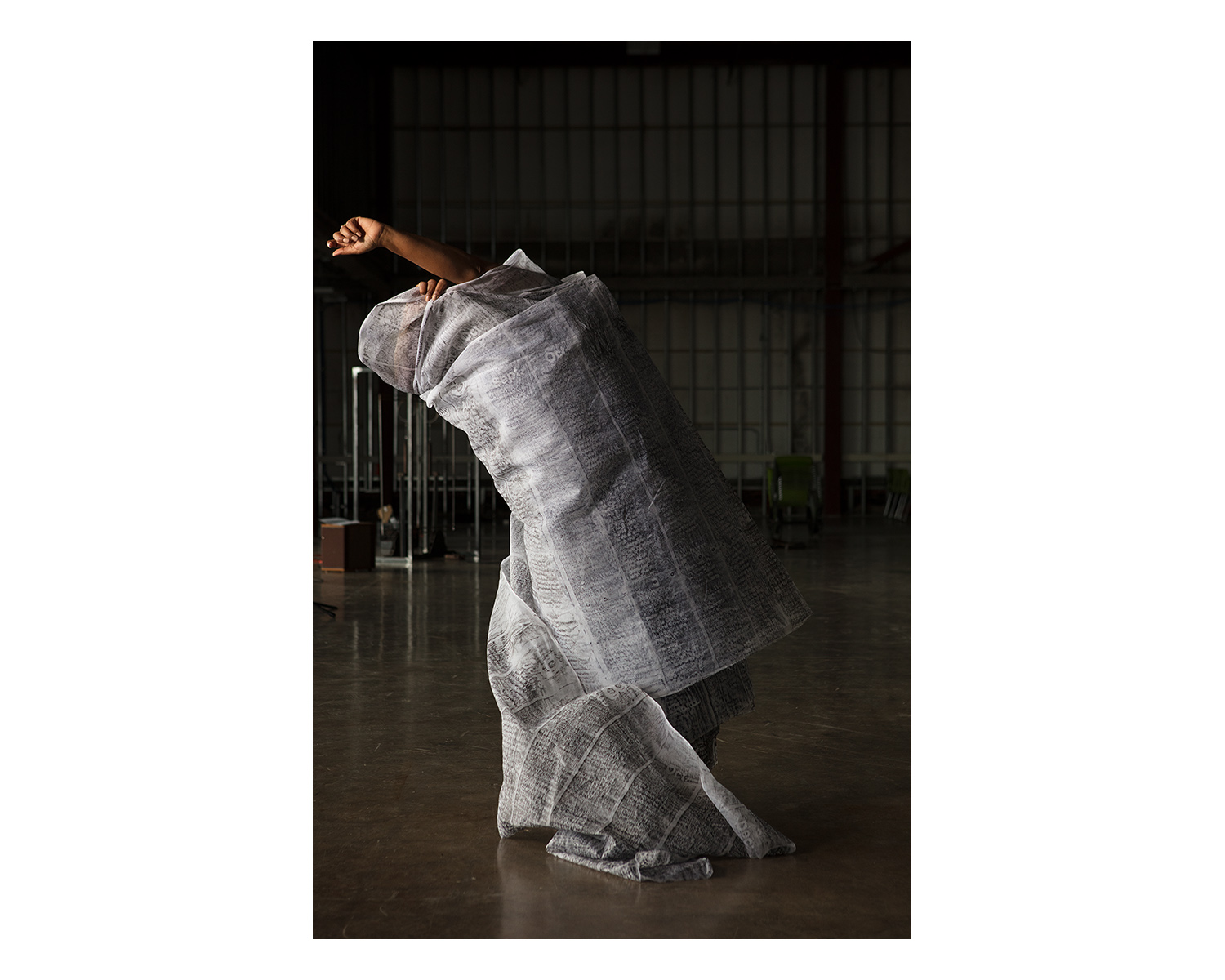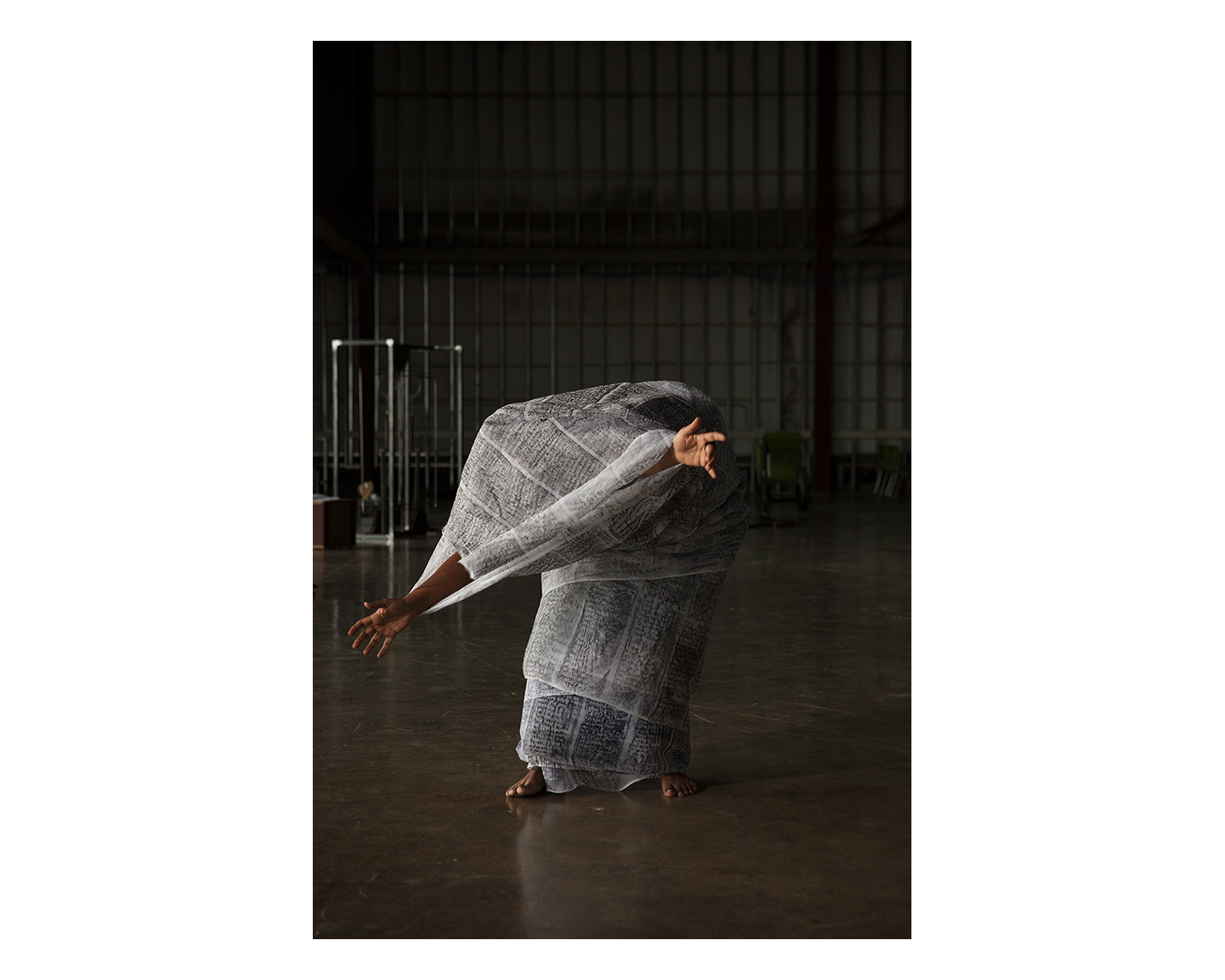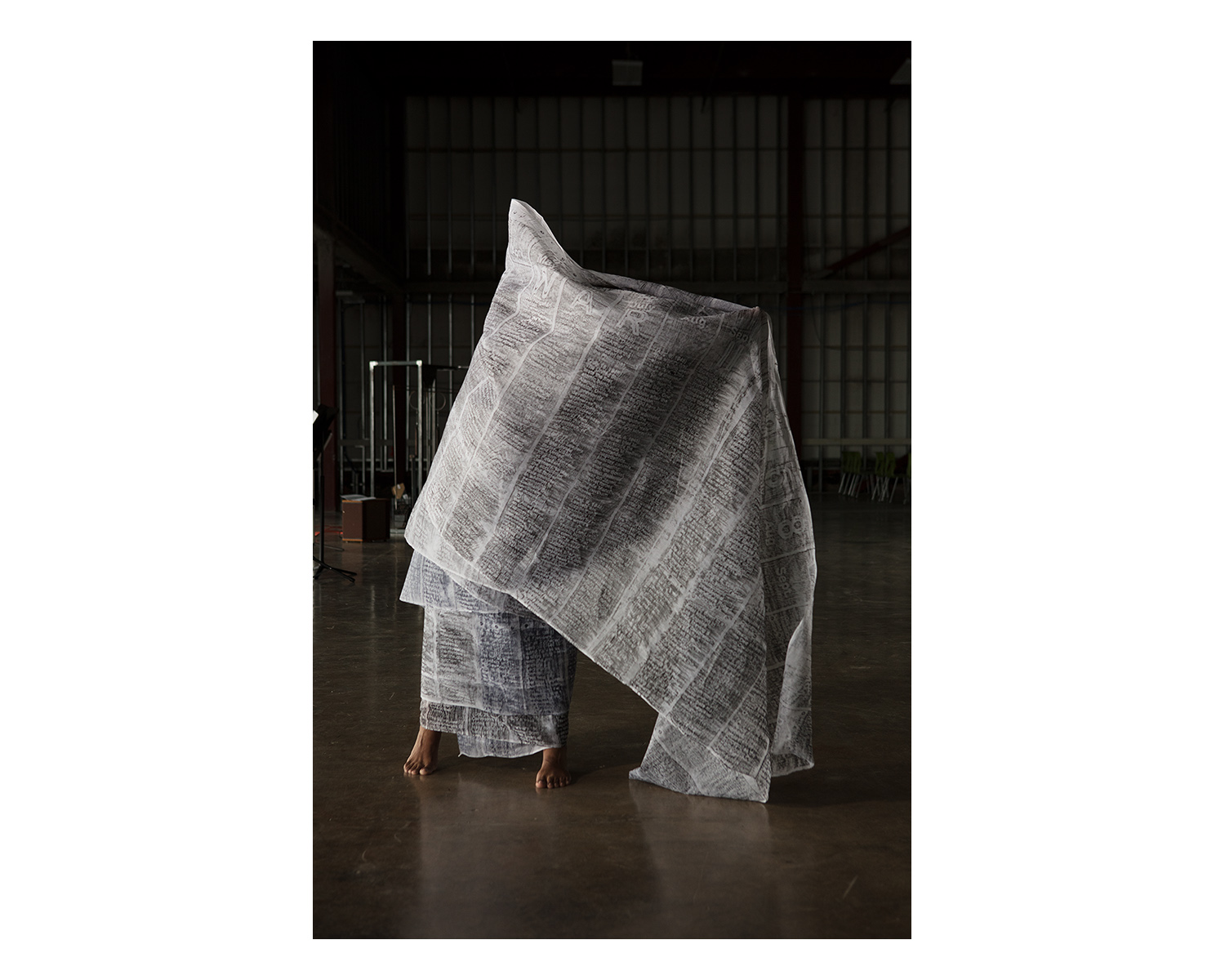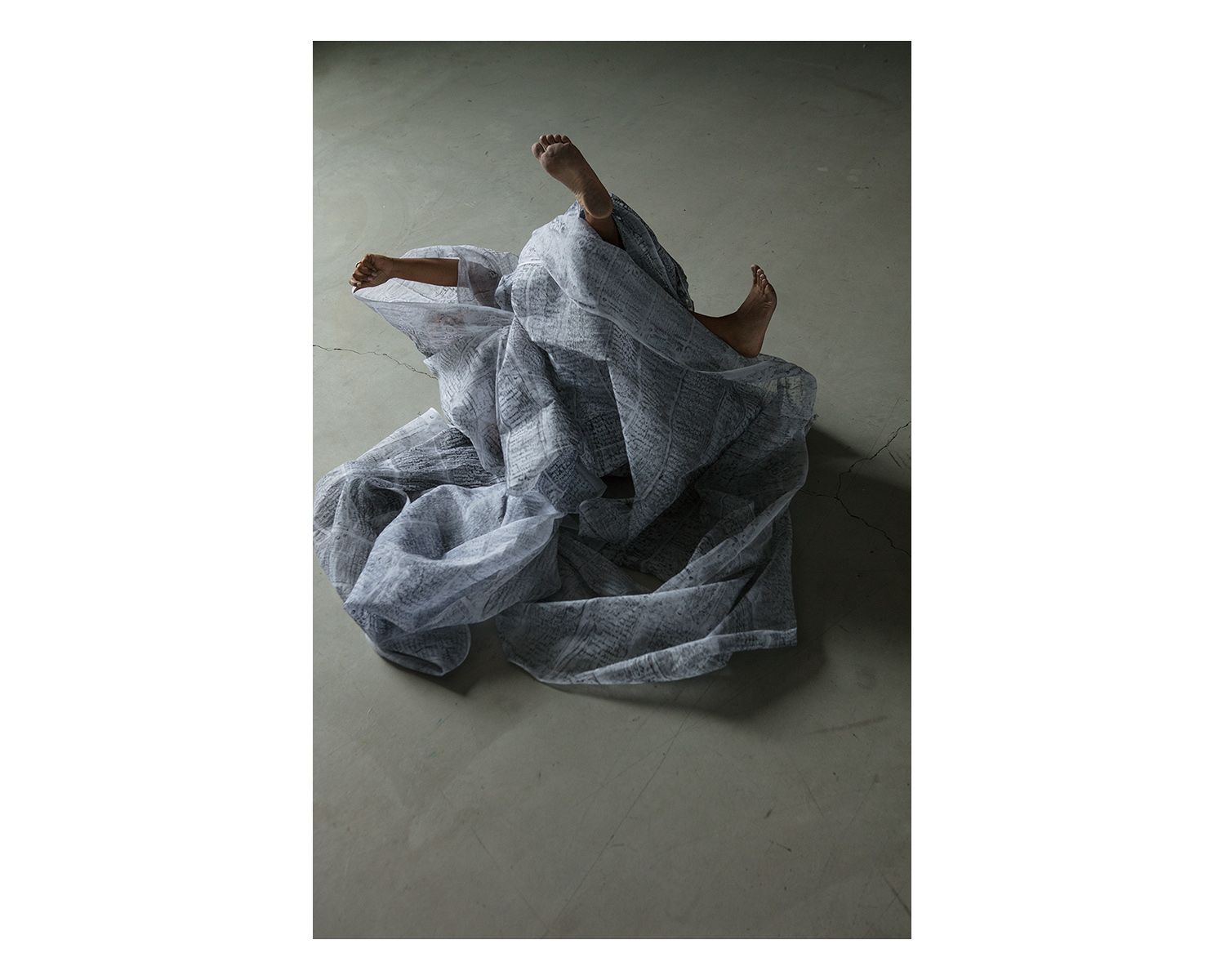On Belonging
Collaborative projects by Lois Bielefeld and Nirmal Raja
In response to increasing racial polarity in the United States, Nirmal Raja and Lois Bielefeld have launched two collaborative projects exploring identity, place, and belonging. While one project examines the role of costume and our visual understanding of race, the other questions the veracity of recorded history and our attempts to contend with it.
What is recorded | What is remembered
· 10 Still Photographs (50x37.5”)
· 3 channel video installation (13 minutes, 45 seconds) (on-view soon)
· 1 Video Performance (5 minutes, 30 seconds) (on-view soon)
What is recorded | What is remembered responds to an engraved timeline of Wisconsin and America’s history on Milwaukee’s river-walk. Raja made a rubbing of sections of this timeline on 30 yards of fabric with the intent to explore how she fits into American history. The fabric then became a prop for ten performance-based photographs and two separate video works that bring attention to our fraught relationship to history. With an implicit understanding that history is written by victors (usually male) and with plenty of gaps and errors, they choreographed sequences that evoke our conflicted relationship with history. In the three-channel video work the fabric and ritual actions are performed by nineteen women. History is visualized as a membrane that connects, divides, filters and binds. They made a deliberate choice to give prominence to women from diverse backgrounds and stand in for marginalized communities and pay homage to their crucial role in this nation’s story. These three works address the slippage of time, inter-connectedness, and the burden of responsibility.
An audio archive of interviews with diverse women from our community talking about history and identity is housed on Soundcloud, linked below-
